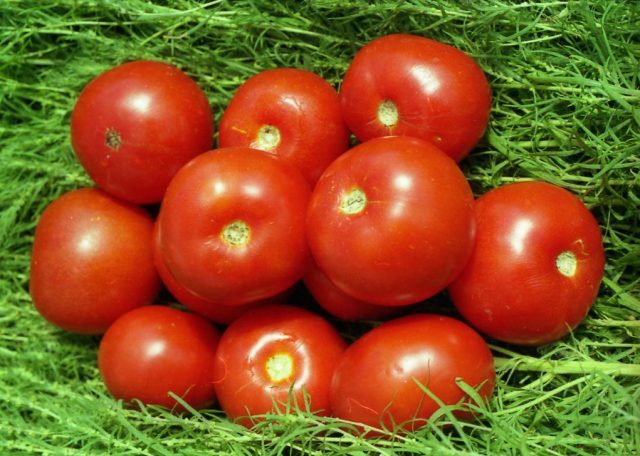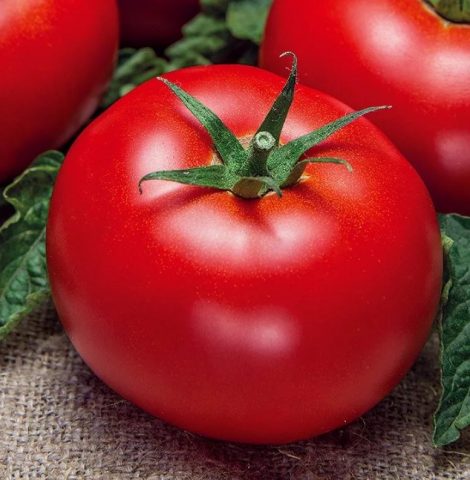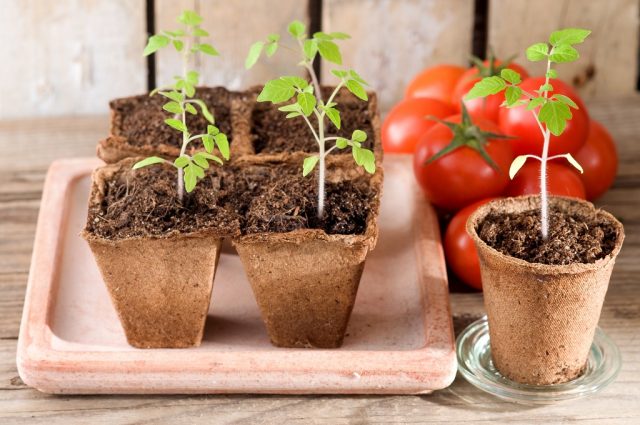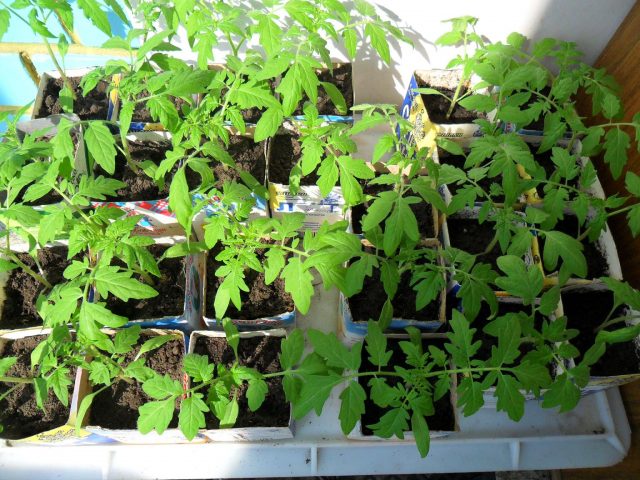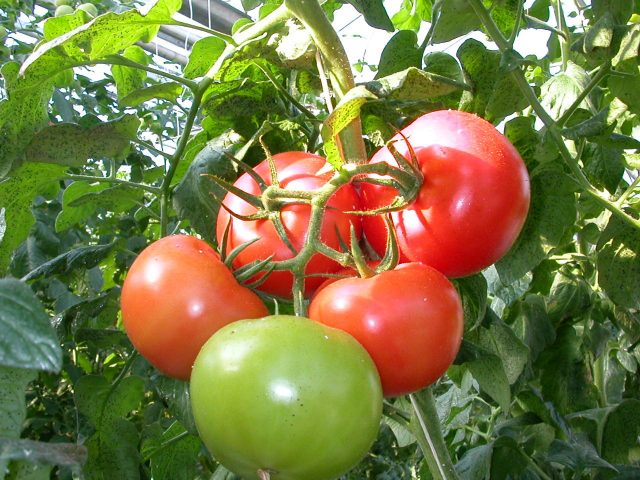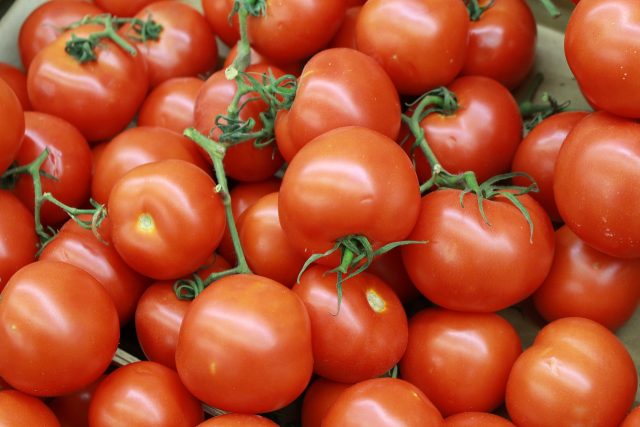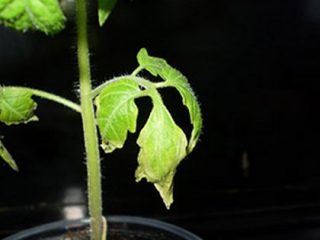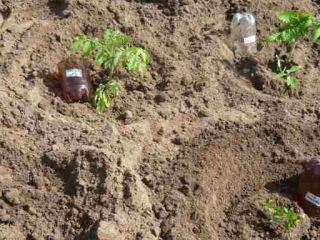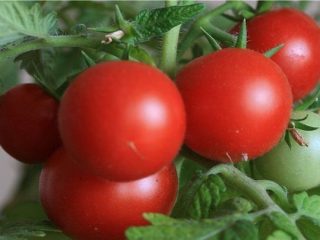Content
Volgogradets tomato is a domestic hybrid for planting in various regions of Russia. It is distinguished by good taste, yield and presentation of the fruit. The Volgogradets tomato is grown in seedlings. Plants are cared for.
Description of tomato
The Volgogradets tomato variety was bred at the Volgograd Experimental Station named after V.I. N.I. Vavilov. The hybrid has been listed in the state register since 1989. It is recommended to grow it in the Central Black Earth Region, the Volga region, the Urals and the Far East.
The Volgogradets variety is planted on personal plots and on an industrial scale. When grown in fields, the fruits are harvested once a season in a mechanized way.
Volgogradets tomatoes ripen in medium terms. The crop is ready for harvest on the 110th day after germination. The bush is semi-spreading, with a large number of leaves, and medium branching. The plant is undersized, no more than 1 m high.
Volgogradets tomatoes have light green, slightly corrugated leaves of medium size. Plant of determinant type. The inflorescence is of a simple type. The first buds appear above 8 leaves, the next - every 1 or 2 leaves.
Description of fruits
According to the description of the variety, photos and reviews, the fruits of the Volgogradets tomato have a number of features:
- rounded shape with light ribbing;
- bright red color;
- number of nests from 2 to 3;
- weight from 60 to 80 g.
The fruits contain up to 5.3% dry matter and 3.7% sugars. The taste is assessed as good. Ripe tomatoes have a dense skin.
Volgogradets tomatoes have a universal purpose. They are suitable for fresh consumption, preparation of salads, snacks, hot dishes. Tomatoes are suitable for whole-fruit canning and other harvesting.
Main characteristics
The hybrid is intended for planting in open ground. In the middle lane, in the Urals and the Far East, tomatoes grow better in a greenhouse.
Fruiting of Volgogradets tomatoes begins in the medium term. In warm regions, this is the first days of July, in cooler climates - the end of the month. The harvest ripens amicably.
The yield is about 11 - 12 kg per sq. m. Each plant bears up to 4 kg of fruit. The quality of the soil, illumination, the flow of moisture and minerals positively affects the yield. The harvested fruits can be stored without problems in room conditions for 15 days.
The Volgogradets variety is susceptible to late blight, tobacco mosaic virus, apical rot, and septoria. When growing tomatoes, special attention is paid to agricultural technology and care. Do not allow moisture to rise in the greenhouse, weed regularly weeds, introduce moisture and fertilizers in a timely manner.
Dangerous pests of tomatoes of the Volgogradets variety - bear, aphids, spider mites. Folk remedies are used against insects: wood ash, tobacco dust, wormwood infusion. Chemicals are also used - Actellik and others.
Advantages and disadvantages
The advantages of Volgogradets tomatoes:
- universal purpose;
- good taste;
- high productivity;
- transportability and keeping quality;
- compact size.
Disadvantages of the Volgogradets variety:
- susceptibility to disease;
- the need for protection from pests.
Planting and care rules
For growing tomatoes in Volgogradets, it is important to follow the rules of planting and care. First, tomato seedlings are obtained, which are transferred to open ground.During the growing season, plants are watered and fed, the soil is mulched with humus.
Sowing seeds for seedlings
Planting begins in March or April. They prepare the soil for tomatoes on their own or buy a ready-made substrate in a store. If the soil is taken from the site, then first it is kept in the cold for 3 months in order to destroy pathogens and pest larvae. For disinfection, the soil is also placed in a heated oven for 20 minutes.
For tomatoes Volgogradets prepare containers with a height of 10 - 12 cm. For picking, take containers with a volume of 1 - 2 liters. The pots are washed with warm water and soap. Be sure to provide holes for moisture drainage.
The containers are filled with soil and made on the surface of a furrow 1 cm deep. Tomato seeds are placed in them. Leave 2 - 3 cm between the plants. A thin layer of earth is poured on top and the plantings are watered abundantly. Then the containers are covered with glass or foil and transferred to a warm and dark place. For cultivation in peat tablets, 1 - 2 seeds are placed in each.
Air temperature affects seed germination. The higher the value, the faster the sprouts will appear. Turn the film over from time to time and remove condensation. On average, seedlings appear in 10 - 14 days.
Containers with seedlings of the Volgogradets variety are rearranged on the windowsill. If there is a lack of natural light for 12 - 14 hours, phytolamps are turned on above the plants. The room with tomatoes is constantly ventilated. Seedlings are watered 1 - 2 times a week when the soil begins to dry out.
When the seedlings have the 2nd - 3rd leaf, they start picking. Plants are distributed in larger containers. If tomatoes are grown in peat tablets, then one strongest specimen is left.
When picking, they try not to damage the roots of the Volgogradets variety. After transplanting, the tomatoes are watered and left in the shade. Tomatoes are transferred to a balcony or loggia for hardening 3-4 weeks before planting. So the plants will better adapt to new conditions.
Transplanting seedlings
Tomatoes are transferred to the greenhouse or soil when the soil warms up. This is usually May or early June. The timing of transplanting depends on the region and place of cultivation. If frosts are expected, then it is better to postpone work.
The soil for Volgogradets tomatoes is prepared in autumn. Choose a site where root crops, onions, garlic, herbs grew. If there were potatoes, peppers or any varieties of tomatoes in the garden, then it is better to find a more suitable place.
For transplanting the Volgogradets variety, choose a cloudy day, morning or evening. For 1 sq. m have no more than 3 bushes. Pre-dig holes with a depth of 15 cm. In the greenhouse, it is better to plant tomatoes in a checkerboard pattern. This makes it more convenient to care for plants that do not interfere with each other.
Plants are watered and carefully removed from containers. They try not to break the earthen lump. Then the tomatoes are transferred to the hole, the roots are covered with earth and compacted. The final stage is abundant watering of the tomatoes. The first time after planting, tomatoes are not watered or fed. They are covered with paper caps from the hot sun.
Tomato care
Volgogradets tomatoes respond positively to leaving. Plants are watered 1 - 2 times a week. Do not allow the soil to dry out or form a crust on it. Be sure to use warm water. It is best to water the tomatoes in the evening.
After watering, the soil is loosened so that moisture is better absorbed. Mulching helps to reduce watering. A layer of straw or humus is poured under the plants, which prevents moisture evaporation.
Top dressing is necessary for Volgogradets tomatoes throughout the growing season:
- 10 days after landing in the ground;
- when flowering;
- during the ripening period of the fruit.
For the first feeding of the Volgogradets variety, use an infusion of chicken manure 1:10 or slurry 1: 5.Fertilizer is poured under the root of the plants. 5 g of ammonium nitrate and 15 g of superphosphate are also embedded in the soil, after which moisture is introduced. Top dressing of wood ash is also effective. Add 200 g of this fertilizer to a bucket of water and water the tomatoes.
To prevent the tomatoes of the Volgogradets variety from bowing under the weight of the fruit, it is recommended to tie them to a support. Use wooden planks or metal pipes. It is convenient to use a trellis. For this, stakes are driven in every 3 m and strings are pulled between them. Bushes are tied up in 2 - 3 stages as they grow.
Conclusion
Volgogradets tomato is a worthy variety for the middle lane and colder regions of Russia. The hybrid has a good taste, has a long shelf life, and is versatile in use. When growing a variety, it is important to provide it with protection against fungal diseases.
